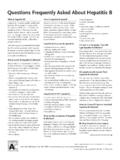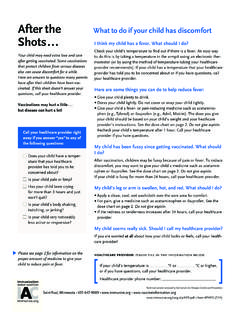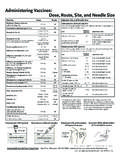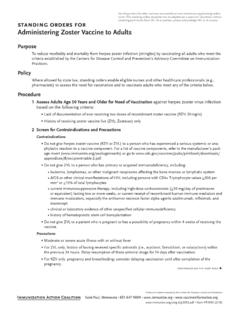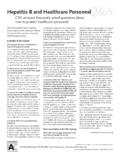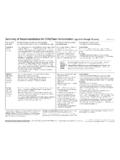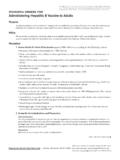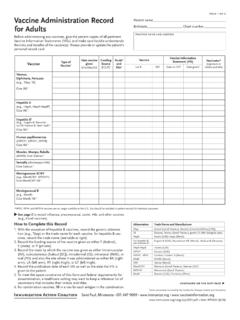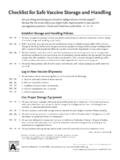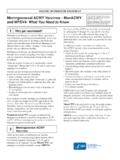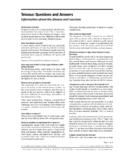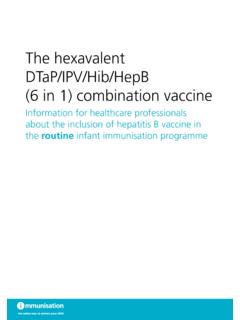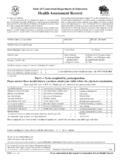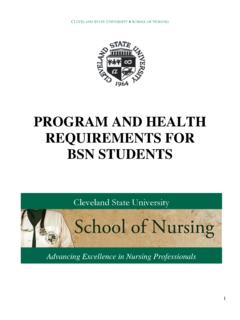Transcription of Pertussis (Whooping Cough)Q&A Questions and …
1 Technical content reviewed by the Centers for Disease Control and PreventionSaint Paul, Minnesota 651-6 47-9009 Item #P4 212 (8/18)What causes Pertussis ? Pertussis , commonly known as whooping cough, is caused by a bacterium, Bordetella does Pertussis spread? Pertussis is spread through the air by infectious drop-lets and is highly long does it take to show signs of Pertussis after being exposed?The incubation period of Pertussis is commonly 7 to 10 days, with a range of 4 21 are the symptoms of Pertussis ?
2 Pertussis disease can be divided into three stages:Catarrhal stage: can last 1 2 weeks and includes a runny nose, sneezing, low-grade fever, and a mild cough (all similar symptoms to the common cold).Paroxysmal stage: usually lasts 1 6 weeks, but can per-sist for up to 10 weeks. The characteristic symptom is a burst, or paroxysm, of numerous, rapid coughs. At the end of the cough paroxysm, the patient can suffer from a long inhaling effort that is characterized by a high-pitched whoop (hence the name, "whooping cough").
3 Infants and young children often appear very ill and distressed, and may turn blue and vomit. Whooping does not necessarily have to accompany the stage: usually lasts 2 6 weeks, but may last for months. Although the cough usually disap-pears after 2 3 weeks, paroxysms may recur whenever the patient suffers any subsequent respiratory infec-tion. The disease is usually milder in adolescents and adults, consisting of a persistent cough similar to that found in other upper respiratory infections. However, these individuals are still able to transmit the disease to others, including unimmunized or incompletely immunized serious is Pertussis ?
4 Pertussis can be a very serious disease, especially for infants. Infants (6 months of age and younger) are the children most likely to die from this disease. Rates of hospitalization and complications increase with decreasing age. The breathing difficulties associated with this disease can be very distressing and frighten-ing for the patient and his or her adults are less likely than infants to become seriously ill with Pertussis , most make repeated visits for medical care and miss work, especially when per-tussis is not initially considered as a reason for their long-term cough.
5 In addition, adults with Pertussis infection have been shown to be a frequent source of infection to infants with whom they have close are possible complications from Pertussis ?Younger patients have a greater chance of complica-tions from Pertussis than older patients. The most common complication is secondary bacterial infection, which is the cause of most Pertussis -related deaths. Pneumonia occurs in one out of 20 cases; this percent-age is higher for infants younger than age 6 are also more likely to suffer from such neuro-logic complications such as seizures and encephalopa-thy, probably due to the reduction of oxygen supply to the brain.
6 Other less serious complications include ear infection, loss of appetite, and with Pertussis can have complications such as pneumonia (up to 5% of cases) and rib fracture from coughing (up to 4% of cases). Other reported side effects include (among others), loss of consciousness, female urinary incontinence, hernias, angina, and weight do I know if my child has Pertussis ?The diagnosis of Pertussis is usually made based on its characteristic history and physical examination. A labo-ratory test may be done, which involves taking a speci-men from the back of the patient's throat (through the nose).
7 Is there a treatment for Pertussis ?Antibiotics are necessary in treating Pertussis cases. The drug of choice is usually a form of erythromycin that is also given to all household and other close con-they haven t received it (Whooping Cough) Questions and Answersinformation about the disease and vaccinescontinued on the next page How long is a person with Pertussis contagious?People with Pertussis are most infectious during the catarrhal period and during the first two weeks after onset of the cough (approximately 21 days).
8 How common is Pertussis in the United States?Before a vaccine against Pertussis was available, per-tussis (whooping cough) was a major cause of child-hood illness and death in the United States. From 1940 1945, over one million cases of Pertussis were reported. With the introduction of a vaccine in the late 1940s, the number of reported Pertussis cases in the declined from approximately 200,000 a year in the pre-vaccine era to a low of 1,010 cases in the 1980s, the number of cases of Pertussis has increased, especially among babies younger than 6 months and teenagers.
9 In recent years, several states have reported a significant increase in cases, with out-breaks of Pertussis reaching epidemic levels in some states. Many infants have died from whooping cough during this you get Pertussis more than once?Reinfection appears to be uncommon but does occur. With natural infection, immunity to Pertussis will likely wane as soon as seven years following disease; reinfec-tion may present as a persistent cough, rather than typical Pertussis . When did vaccine first become available for diph-theria, tetanus, and Pertussis ?
10 The first inactivated toxin, or toxoid, against diphtheria was developed around 1921, but it was not widely used until the 1930s. In 1924, the first tetanus toxoid (inac-tivated toxin) was produced and was used successfully to prevent tetanus in the armed services during World War II. The first Pertussis vaccine was developed in the 1930s and was in widespread use by the mid-1940s, when Pertussis vaccine was combined with diphtheria and tetanus toxoids to make the combination DTP vac-cine. A series of 4 doses of whole-cell DTP vaccine was quite (70 90%) effective in preventing serious pertus-sis disease; however, up to half of the children who received the vaccine developed local reactions such as redness, swelling, and pain at the injection site.
